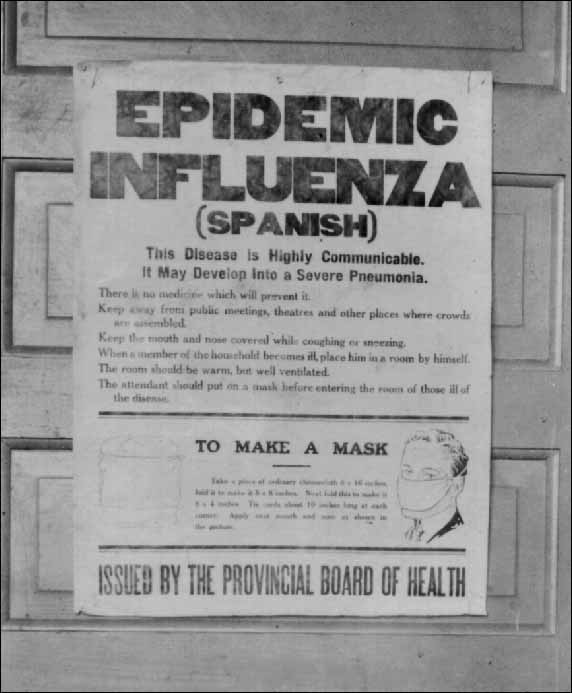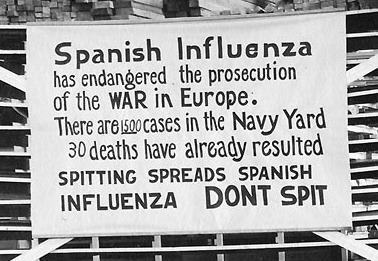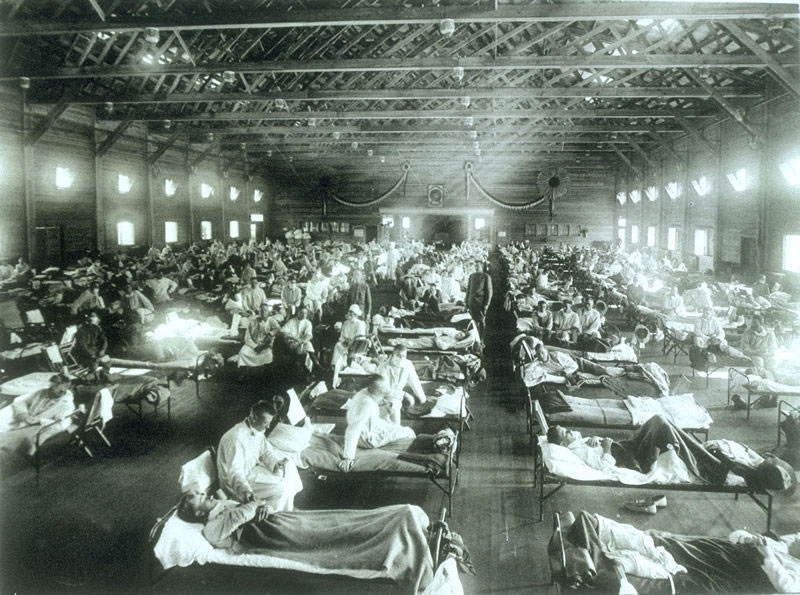Did the so-called “Spanish flu,” an epidemic that killed more than 50 million people worldwide between 1918 and 1919, really start in Spain? For almost a century Spaniards have either borne this mark of shame with resignation, wearily telling the world that it had to start somewhere, or have put the blame on neighbouring France.
 A study by Spanish and US scientists points out that the pandemic was dubbed “Spanish Influenza” by the world because the press in Spain widely reported the outbreak in its early stages between May and June of 1918. Spain was not involved in World War I, and its media had no restrictions, while the main European nations and the United States, embroiled in the conflict, censored all news relating to the pandemic for fear of a decline in troop morale.
A study by Spanish and US scientists points out that the pandemic was dubbed “Spanish Influenza” by the world because the press in Spain widely reported the outbreak in its early stages between May and June of 1918. Spain was not involved in World War I, and its media had no restrictions, while the main European nations and the United States, embroiled in the conflict, censored all news relating to the pandemic for fear of a decline in troop morale.
That said, the team of researchers, from the University of the Basque Country, Madrid’s Complutense University, and the Bethesda National Institutes of Health, as well as Arizona State University, are not ruling out the possibility that the pandemic may have originated in Spain. The paper, published in BMC Infectious Diseases, is the most detailed study of Spanish flu ever carried out and establishes that Spain was certainly very badly hit by the pandemic and that Spanish cities were definitely early sources of the virus.
As yet, there is no incontrovertible evidence that the virus emerged in Spain, although some of the authors believe it may well have. Antón Erkoreka, the director of the Basque Museum of the History of Medicine, says that such a hypothesis is perfectly possible, “but it has yet to be proved: perhaps the newspapers were right when they called it Spanish flu.”
In fact, the accepted version of events traces the first case of Spanish flu a long way from Spain, and before the first cases were reported in Spain: to March 4, 1918, at Camp Funston, Kansas, where US troops waiting to be sent to fight in Europe were stationed. Although the flu spread rapidly, it was no more lethal than any recorded in previous years. To begin with, the worst symptoms of the new epidemic were mild respiratory problems of the kind that still kill around half-a-million people every year around the planet.
 But the virus that came to be known as Spanish flu had its own plans to enter the pages of infamy. At a certain point during the summer of 1918, it underwent a mutation, or a group of them, which converted it into the most efficient agent of death in history. Again, according to historical reconstructions used to this day, the first case of the second wave was not recorded in Spain, and dates to August 22, 1918, in the French port of Brest, used as the entry point for around half the US troops that had joined France and Britain in fighting Germany in April 1917.
But the virus that came to be known as Spanish flu had its own plans to enter the pages of infamy. At a certain point during the summer of 1918, it underwent a mutation, or a group of them, which converted it into the most efficient agent of death in history. Again, according to historical reconstructions used to this day, the first case of the second wave was not recorded in Spain, and dates to August 22, 1918, in the French port of Brest, used as the entry point for around half the US troops that had joined France and Britain in fighting Germany in April 1917.
“By April of 1918, the virus was in Europe,” says Erkoreka, “both among the troops as well as the civilian population; but this wave didn’t result in many deaths. Later though, the outbreak in Madrid that May was significant, both in terms of the high death rate, as well as the way that it affected people across class barriers: even King Alfonso came down with it between May and July,” he says, noting that the Spanish monarch did not belong to a high-risk group: he was aged 32, well-fed, and in good physical shape, but the virus was no respecter of palace walls.
The flu spread rapidly through Spain: the authors estimate that up to 147,000 people died out of a total population of 20 million. But by the autumn of that year, the mortality rate in Madrid had begun to fall in comparison to the provinces. This is an effect well understood by epidemiologists: the population of the capital had been exposed to the virus, and was by now immunized against its variants, but was now also able to help spread it. This process, say the researchers, shows that the virus had mutated during the summer. Those infected during the early stages were relatively fortunate because they developed immunity to the second stage of the virus.

Previous studies of Spanish flu have generally discarded the idea that the pandemic originated in Spain, suggesting that it was already present in France in 1916 and that it was brought to Spain by unskilled Spanish and Portuguese labourers working in France. But these workers may well have taken the deadlier mutation of the virus back with them to France after the summer of 1918.
The Spanish-US team’s work, supported by a wealth of statistics, shows that just about every province in Spain was hit by the flu. There were three viral waves between January 1918 and June of 1919, moving from north to south, a process that can only partly be explained by socio-economic factors says the team.